It’s a bummer if you love skin art, but you’re allergic to tattoos. I mean, how unlucky can you be? Some people are allergic to pets, others to certain plants. But you just had to be allergic to something you really love – getting inked! But don’t worry, it’s not the end of the world. Hopefully, your tattoo ink allergy is on the mild side and will soon go away without medical intervention.
Page Contents
- What’s a tattoo allergy?
- Allergic reaction to tattoo ink: mild to severe signs and symptoms
- Common causes of tattoo ink allergies
- How to test if you’re allergic to tattoo ink?
- Treatment options for your tattoo ink allergy
- Prevention is better than cure, so here’s how you minimise tattoo allergy risk
- Conclusion
What’s a tattoo allergy?
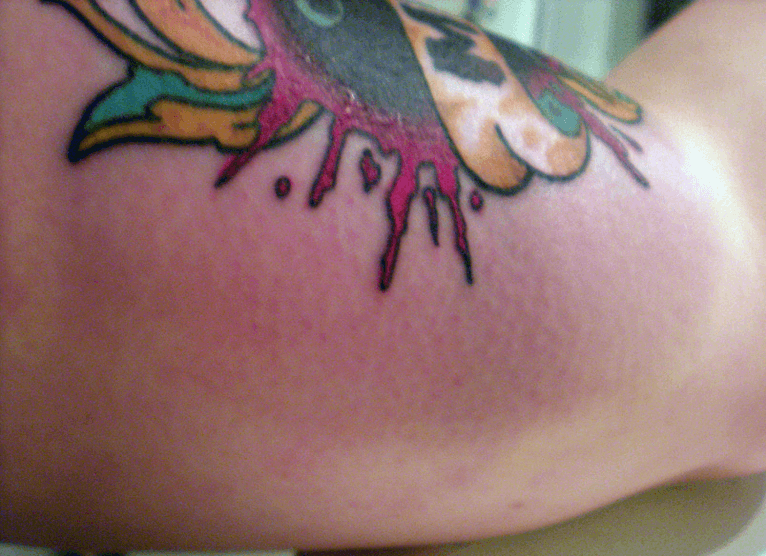
A swollen tattoo (Photo by Kim Laurenson)
Tattoo allergies are usually localised reactions to tattoo ink (and in rare cases, even the tattooing equipment used). It’s ‘localised’ because it will usually only appear at the tattooed area. More often than not, it will be located directly above the tattoo (colour) ink you’re specifically allergic to.
Say, for instance, you had a tattoo of a fish with red eyes. If you’re allergic to red ink, the symptoms will only show up at the spots where red ink was used (the eyes).
Note, however, that not all allergies will present localised symptoms. Others will affect the entire tattooed area and even the skin surrounding it.
Also, some allergies don’t happen straight away. In many cases, they occur a few hours or a few days after getting the tattoo. In rare instances, they can even appear months or years later!
Obviously, if this happens to you, you’ll be left scratching your head. But remember, tattoo ink is a foreign object inserted in your body. You may think it’s settled in after a while. But the truth is, you can’t ever be 100% certain you’ll never experience a tattoo allergy in your lifetime.
Allergic reaction to tattoo ink: mild to severe signs and symptoms
You know, the milder symptoms of tattoo allergies, tattoo infections and the beginning of the tattoo healing process can look pretty much the same for the first few days. However, it’s when the reactions start becoming severe that you truly need to worry. That said, here are some common presenting symptoms of tattoo ink allergy:
Mild symptoms:
- Itching
Itching is pretty much normal for a healing tattoo, but for a fresh one, not so much. So, if you find your tatt itching like there’s no tomorrow, well, perhaps you’re having an allergic reaction.
- Swelling
A bit of inflammation is normal during the early days, too. But if it shows no sign of slowing down and going back to normal, then an allergy may be responsible for the swelling.
- Scaly skin around the tattoo
Scaly skin shouldn’t be seen around your new tattoo. Unless you’ve got skin drier than the Sahara, then in that case, a nice moisturising lotion might be in order.
- Rashes and bumps
You also get rashes and bumps with an infection. But with a tattoo ink allergy, it’s bound to either go away on its own after a few days or some anti-allergy medicine (e.g. antihistamine) will take care of it pretty quickly.
- Irritation and redness
All tattoos are going to look red during the first 24-48 hours. Your skin just took a beating courtesy of tiny needle pricks (thousands of them!). However, with a tattoo allergy, instead of the redness eventually going away, it may intensify even more.
Severe symptoms:
- Intense itching

Photo by Анастасия Гепп from Pixabay
Itching and intense itching are two different things. Intense itching will feel like something’s crawling underneath, and you literally can’t help but scratch it. But try your hardest and resist the temptation to do so – for your tattoo and your health’s sake!
- Burning feeling in and around tattooed area
Well, this is obviously a bad sign. If you feel like this, call your GP ASAP.
- Pus discharge from wound
Pus is never a good sign. It can signal either an allergy or an infection. Either way, it’s bad. And if not treated early, it can progress to something so much worse.
- Fever and chills
Some people do get fevers just by getting a tattoo. Perhaps their immune system’s a bit on the weak side and it’s gone on overdrive to protect the body from infection. However, if your body temperature goes to 39C and up, and you’re experiencing chills, seek medical attention.
- Difficulty breathing
Obviously, if you have trouble breathing because of a tattoo ink allergy, then you need to do something straight away! Your airway’s literally telling you to go and present yourself at the hospital, so don’t delay!
Common causes of tattoo ink allergies
If you’re wondering what’s causing all these allergy symptoms to appear right after getting a tattoo, here are the most common causes.
1. Heavy metals
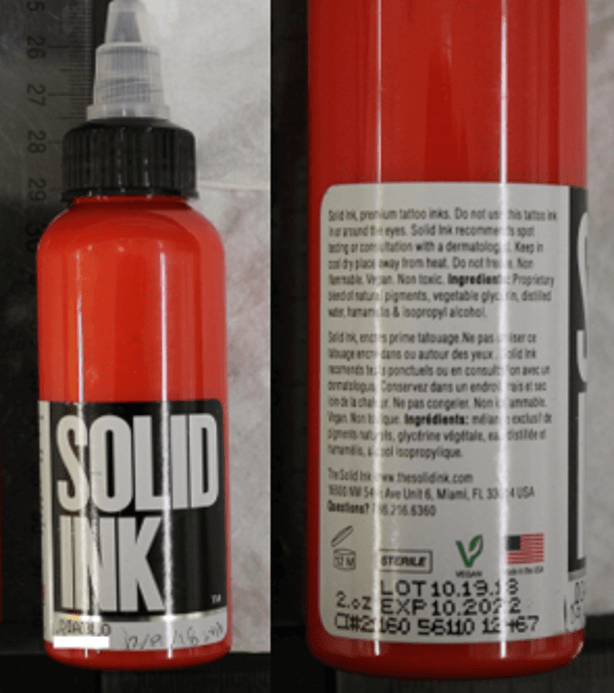
Colourful tattoos sure are nice to look at, especially if it’s on your skin. But it might surprise you to know that some tattoo ink manufacturers use certain heavy metals and chemicals as ingredients/pigments for their ink. This is, unfortunately, the downside of an industry that is not as tightly regulated as it should be.
Here are examples of heavy metals used in tattoo inks:
- Red – can include mercury, cadmium, iron
- Yellow – can include lead, cadmium, zinc, ferricyanide
- Black – can include nickel, carbon, iron
- Green – can include lead, chromium, aluminium, copper, ferricyanide, copper
- Blue – can include cobalt, copper, ferrocyanide
- White – can include lead, zinc, titanium, barium
This isn’t a comprehensive list by any means. Many ink manufacturers don’t even bother listing the ingredients on their ink bottles. They just slap a label saying, ‘Tattoo Ink’ and sell it!
Now, some of these ingredients are commonly used to make printer ink and automobile paint. Therefore, it’s really not all that surprising to learn that these inks cause severe tattoo allergies in many people!
2. Photosensitivity
Sunlight is good for the skin. Normally. But with a healing tattoo, sunlight isn’t your friend. In fact, you need to stay well out of the sun’s rays for as long as 4 weeks. Or at least until your skin fully heals.
Depending on how sensitive your skin is, you could get burned. Obviously, this wouldn’t be a great look for your new tattoo. And if you had your tatt done in red or yellow ink, then you need to take this advice seriously. Why? Because these colour inks usually contain cadmium which can cause an allergic reaction when exposed to sunlight!
Here’s the thing though. Your tattoo may already be fully healed, but as soon as it gets exposed to the sun, you could still experience a (delayed) reaction. This is the reason you’ll hear people wondering why they’re still getting bumpy and raised tattoos after months – or even years – of getting their skin inked!
3. Tattoo ink rejection
It’s common for some ink to ooze out when the tattoo’s relatively fresh. Over the next few days, you’ll see ink coming off in bits and pieces – don’t be alarmed, it’s all totally normal.
However, what isn’t normal is when you turn out to be allergic to the ink and your body is trying to reject it. In many places, tattooists don’t exactly tell you what’s in the ink bottle, so if in doubt, don’t be afraid to ask.
Either way, you could be allergic to one or all of the tattoo ink ingredients. The most telling sign would be symptoms that just won’t go away no matter what you do. In cases like these, tattoo removal may be the only suitable treatment option for you.
4. Sensitive skin
It’s true – some people are born with skin so sensitive that a few seconds of contact with an offending allergen can produce angry little red bumps all over the contact area! Now imagine getting a tattoo and having the tattooist’s hand apply pressure on your skin for several minutes at a time. You could be allergic to the gloves, or you could be allergic to the ink.
Some culprits would be skin conditions like eczema and dermatitis. Technically, eczema is just a more generic term for a type of dermatitis called ‘atopic dermatitis.’ According to Dr. David Hauswirth, eczema affects 10 to 20% of the population.
Some people are aware they have it and tell their tattooist beforehand. Others may get a tattoo without knowing they have a pre-existing skin condition that will likely result to flare-ups, increased itching and redness.
Fortunately, eczema and dermatitis won’t stop you from getting inked. Just don’t go to the tattooist in the midst of a flare-up, but also be honest with them about your condition so they’re aware of it.
How to test if you’re allergic to tattoo ink?
It would be nice to know if you’re allergic to ink, right? It will save you a world of trouble. Unfortunately, there’s no foolproof method yet that can actually 100% confirm you’re allergic to ink or not. But you can try any of the methods below and see if it works for you:
1. Tattoo ink patch test
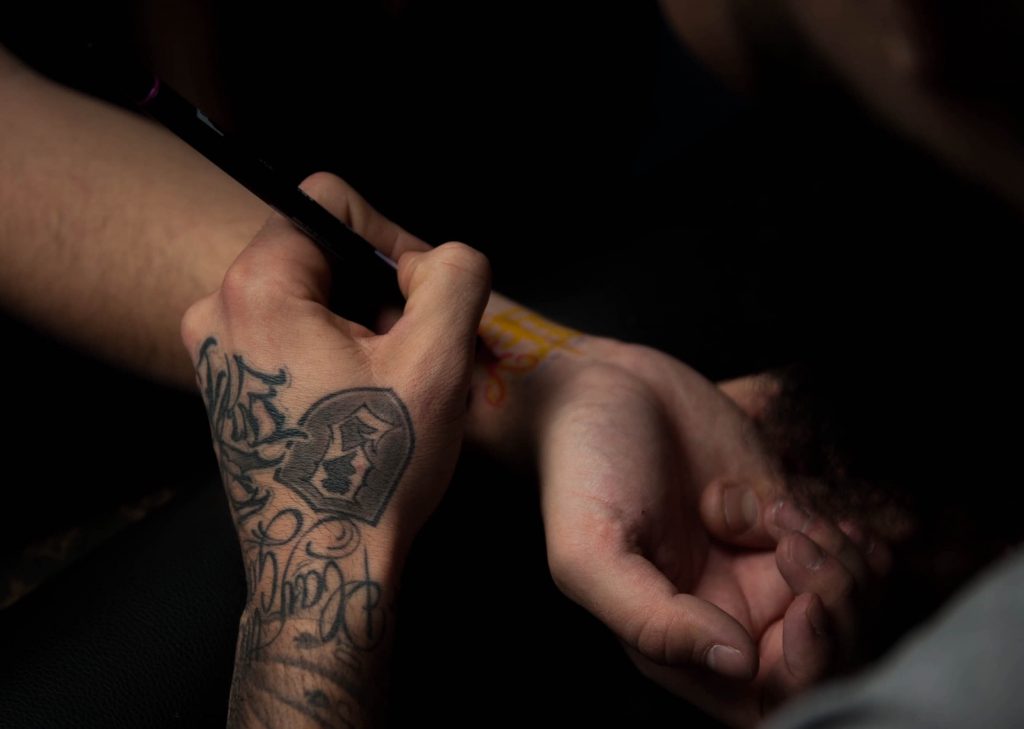
Ask your tattooist for a simple ink patch test (Photo by Yannic Läderach)
If you’ve got sensitive skin that tends to react to the littlest thing, then a patch test may be advisable for you. Now, some tattooists may ask for your medical history. But just in case they don’t, take the initiative and tell them about your skin condition.
The patch testing process is relatively quick and simple. There are two ways your tattooist may go about this:
- External – the tattooist will put a drop of ink (it should be the same kind that will be used on your tattoo) on a patch of skin.
- Internal – the tattooist will actually tattoo a tiny dot on your skin. This will insert the pigment, so you get a more accurate test result.
Either way, you’ll be asked to observe and wait for at least 24 hours to see if you develop a reaction to the ink.
If you don’t develop itching, swelling or redness, then chances are, you’re good with the ink. In this case, you may proceed with the tattooing process.
Take note, however, that if your tattoo design requires a number of colours, then your tattooist should patch test each type of ink on your skin.
Again, this method isn’t a foolproof way of preventing an allergy. Sometimes, even if you pass the patch test with flying colours, you may still experience some allergic reaction a few weeks or months later.
2. Known allergies to ink ingredients
Asking questions is acceptable in tattoo studios. So, please don’t be afraid to ask what’s in the ink bottle. After all, that ink is going in your skin – you’ve got all the right in the world to know!
Of course, this method will only work if you already know what you’re allergic to. If you have contact dermatitis or atopic dermatitis, you’ve probably had patch testing done before. If you have, then you’re in luck.
However, it doesn’t mean to say that if none of the ink ingredients is on your allergen list, then you’re not going to get some kind of allergic reaction to the ink. If you want to be doubly sure (but still not a 100% guarantee), then I recommend you request a tattoo ink patch test from your tattooist as well.
Treatment options for your tattoo ink allergy
Choosing the right treatment option will surely bring a world of relief to your allergy. While this list isn’t comprehensive by any means, the suggestions on this list should help you find some relief – hopefully the permanent kind!
1. Take over-the-counter medicine
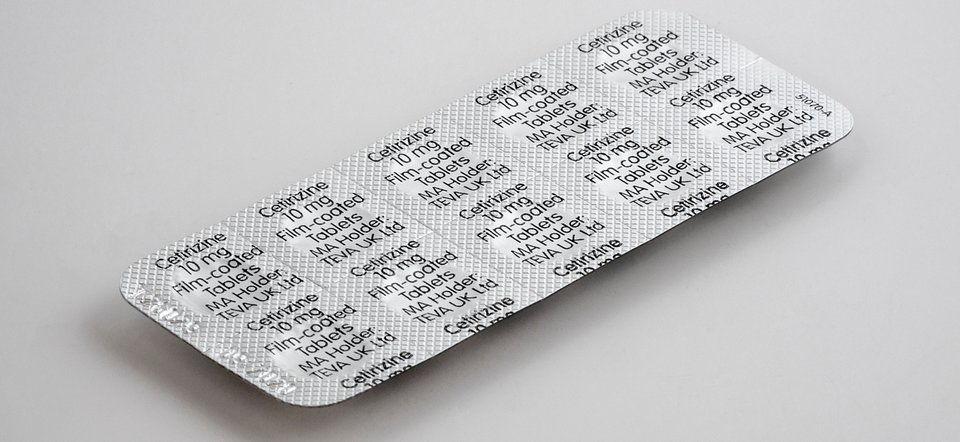
A photo of OTC medicine (Photo by Brett Jordan)
Antihistamines can help stop the itching. You can take either the sedating (perfect if you’re just about ready to tuck in for the night) or non-sedating (if the itch strikes while you’re about to head out the door) kind. If you experience a rash along with the itching, hydrocortisone may do the trick for you.
Obviously, we don’t know your exact issue, so before you actually take any of these medicines, please consult with your GP. The last thing you want is for the medicine to cause even more problems for you!
2. Cold compress
A minor allergy can be quelled by applying a cold compress on the affected area. Now, this is often only a temporary solution, and the symptoms may reappear after an hour or two. But try pairing a cold compress with some medicine, you may finally be able to get some long-lasting relief!
3. Apply itch relieving cream or ointment
These kinds of creams are great for use on fully healed tattoos. But for unhealed ones, you need to check first with your tattooist or your GP as some ingredients may pull out ink from your skin. Obviously, you don’t want this to happen as you could end up with a patchy tattoo!
4. Hydrate and moisturise skin
Like itch relieving creams, this treatment option is best for tattoos that have at least stopped oozing plasma and are already in the scabbing stage. This is because if moisturising lotion is applied prematurely to a fresh weeping tattoo, then it can get absorbed by the skin. This can lead to an infection (so now, you’re the unfortunate soul with both a tattoo allergy and infection!).
For best results, we recommend you use After Inked Tattoo Aftercare Lotion – this is one of the best hydrating lotions for tattoos in the market right now.
5. Tattoo removal
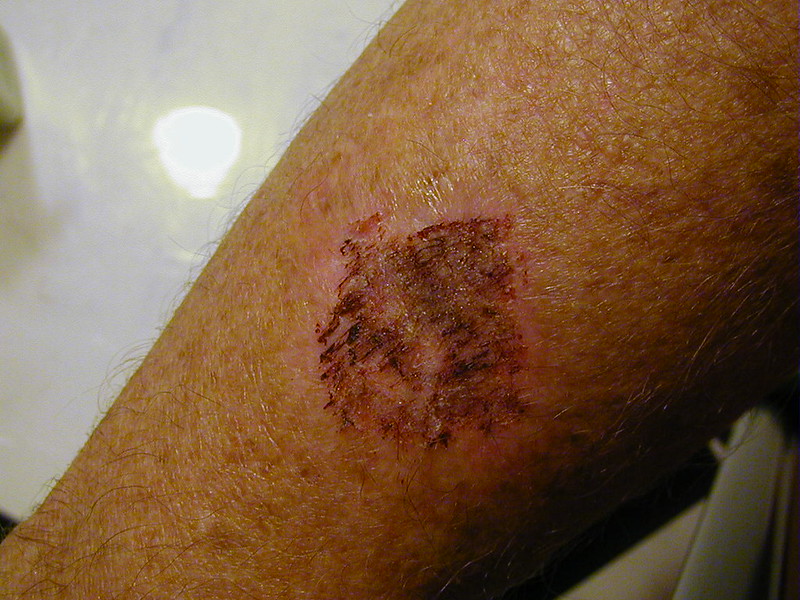
Tattoo removal (Photo by dfrankg on Flickr)
Obviously, this isn’t everyone’s first choice. But if worse comes to worst, and your tattoo ink allergy doesn’t seem to be improving, then this may be the only option. Now, you should never attempt to remove the ink yourself – it’s not as simple as squeezing the ink out of your skin!
You also can’t go back to your tattooist and ask them to remove the tattoo. For tattoo removal, you’ll need to see a doctor. They’ll use a laser machine to break up the ink particles, which will then be absorbed by your body and excreted as waste later on.
Unfortunately, tattoo removal is more costly and more painful than getting a tattoo in the first place. It also doesn’t happen in one sitting. Depending on how big and how colourful your tattoo is, it may take several sessions before you finally see the last drop of ink. Even then, it’s not a 100% guarantee that it will totally vanish from your skin.
Prevention is better than cure, so here’s how you minimise tattoo allergy risk
There is no guarantee, but here are a few tips you can follow to minimise a tattoo ink allergy.
1. Choose the right tattooist
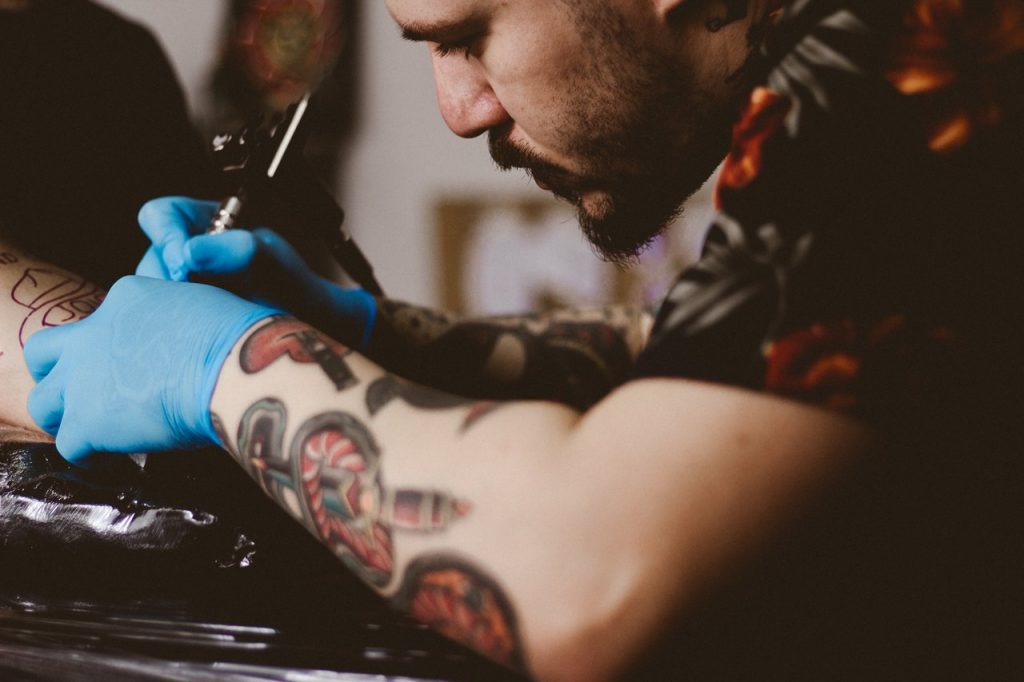
A professional tattooist at work (Photo by Allef Vinicius)
You don’t need to become best buds with your tattooist, but it’s nice to be comfortable with someone who’s going to inflict a world of pain on you. That said, here’s what you should look for in a tattooist:
- Are they registered? Their registration certificate should be displayed in the studio.
- Are they reputable? They should have a stellar reputation. Ask them for references or check out their website and social media pages. Read what people are saying about them.
- Are they honest? They’ll willingly answer all your questions about the tattooing process – from the preparation (using new gloves, putting protective film on all equipment used), the type of ink used and its ingredients, the tattoo process and aftercare – a true professional won’t hesitate to educate you before actually inking your skin.
- Do they verify your age? If you’re young, they should ask you for ID to prove you’re at least 18 years of age – it’s illegal in the UK to tattoo anyone under 18.
- Do they pass the eye test? Their studio should be very clean and the tattooist himself should wear clean (not bloody) clothes.
2. Don’t get a tattoo if you’re sick
Getting a tattoo whilst you’re feeling ill is a bad idea. A tattoo is basically an open wound, so your immune system will be working doubly hard to protect you. Reschedule your appointment. A reputable tattooist won’t work on you if he or she knows you’re ill as it can compromise their work and your health, too.
3. Find out if you have allergies and/or skin condition
Getting a patch test is a good idea, but it would be even better if you already know what you’re allergic to. You can go to an allergist to find out if you’re allergic to common tattoo ingredients. Or if you suspect you have an existing skin condition that can affect your tattoo, speak to a dermatologist about it.
Conclusion
Allergic reactions to tattoos can happen to anyone at any given time. Some get it right after their tattoo appointment, while others don’t present allergy symptoms until much, much later. Whatever your case may be, don’t panic. If none of the allergy treatment ideas I’ve shared here in this article works for you, please get in touch with your GP.
